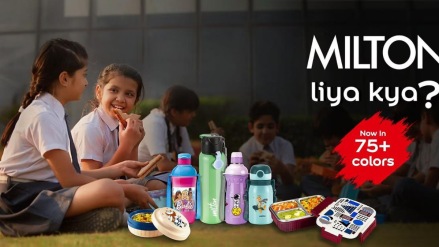When Milton unveiled its new campaign asking consumers “Milton Liya Kya”, it was a clear signal that the home-grown housewares brand was trying to make itself synonymous with its category. While there is no denying that this new approach by Milton is a break from its customary problem-solution advertising, the question is, will it help the brand score bigger in the long run? Does Milton have the wherewithal to fight trademark erosion?
Numerous brands successfully made themselves synonymous with a category, only to learn the hard way that they were paving the way for competitors as well. Take Tupperware, an eponym for leak-proof containers. Earlier this year, Tupperware Brands Corporation unveiled a potential shutdown plan weighed down by financial difficulties.
Closer home, when TVS launched its first indigenously-developed gearless two-wheeler Scooty in 1993, little did it anticipate that the brand will go on to create a whole new category — so much so that you have at least 15 “scooty” brands on Indian roads in 2024. Various industry studies show Honda Motorcycle and Scooter India-owned Activa is the most in-demand scooty in the Indian market, followed by Suzuki Motorcycle’s Access. TVS’ Jupiter is a close third. The TVS Scooty Pep Plus, a direct descendant of the original TVS Scooty, is still listed on TVS’s website but was discontinued last year to conform to regulation.
The thing is this: Becoming a category descriptor is a double-edged sword. While it is flattering for a brand to have such an overwhelming presence in the market, it is also difficult for the owner to protect the brand legally. Also, when a brand becomes a category reference, all the carefully curated differentiation flies out the window.
Having said that, if a market leader or a brand that is very close to being a leader makes a bold statement like ‘Milton liya kya?’, it’s a nice way of cementing the fact that “we are leaders of the category”, says Lloyd Mathias, business strategist and marketing expert. He has a point. The 52-year-old brand is an unassailable leader in the homeware category, offering a range of products such as lunchboxes, casseroles, cookware and electric appliances.
However, Milton is fighting a battle of its own. More than 80% of the cookware and tableware market in India is unorganised and is led by local and cheaper alternatives.
So the job for Milton is to establish its credentials as a “dependable” brand offering “food grade” products, say observers. The task is immense and is not comparable to what a Bisleri or Xerox is up against.
Naresh Gupta, co-founder of Bang In The Middle, says it is highly unlikely that Milton will become the category with this line of advertising. “Insulated thermos is not Milton as a category, tiffin boxes is not Milton as a category,” he says. “This is a category in which you have a lot of players who are undefined and non-branded.” In other words, this might be an effort on the part of the brand to come across as an organised sector brand in a highly fragmented category.
Gupta cites the case of Action Shoes as a more appropriate comparison. Faced with unbranded competition, it pitched its communication on the plank of “going to school with Action Shoes”.
Net net, it might be a risky move but for a brand like Milton that is buffeted by unbranded competitors, this might possibly be the smartest way to stand out in the clutter.
